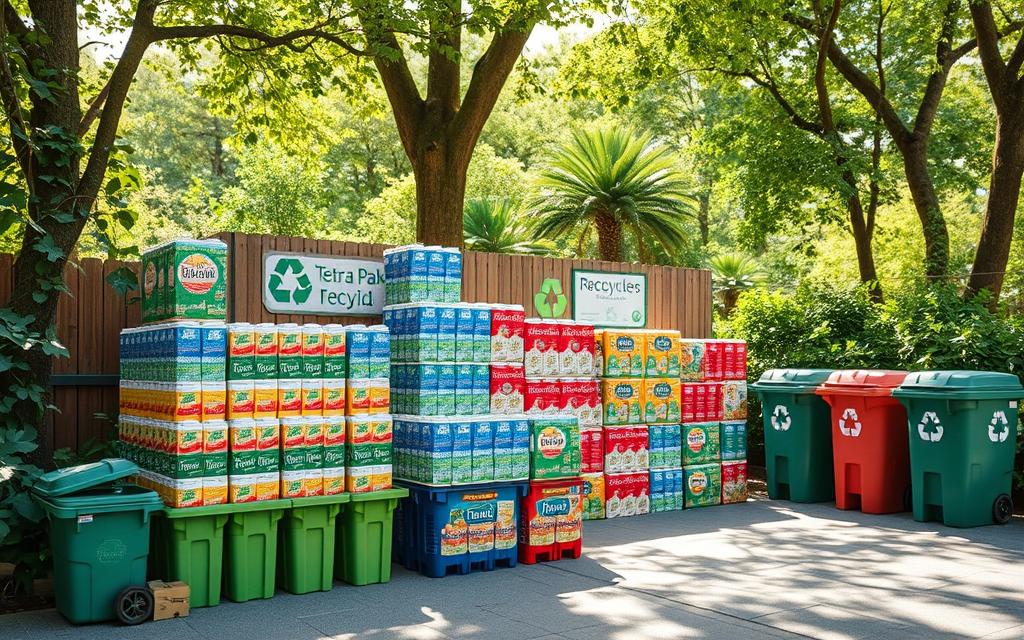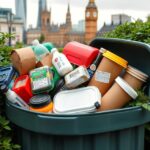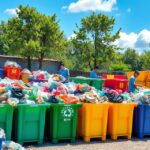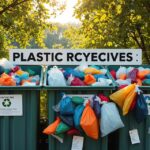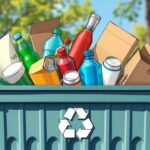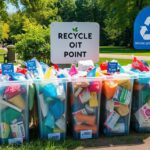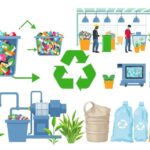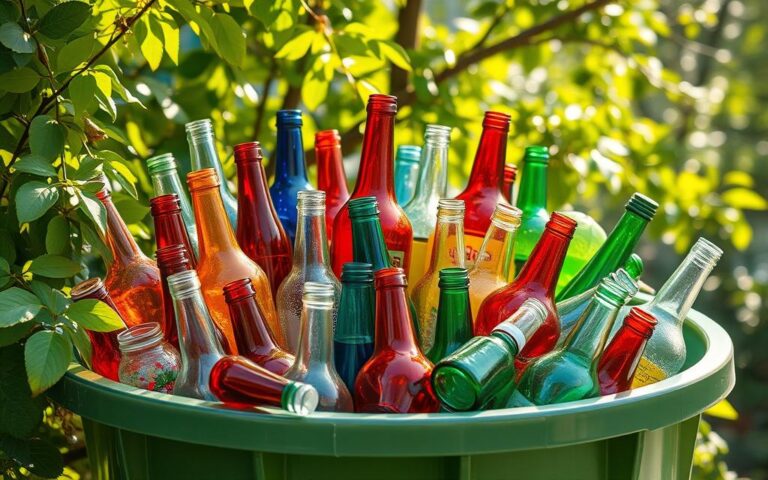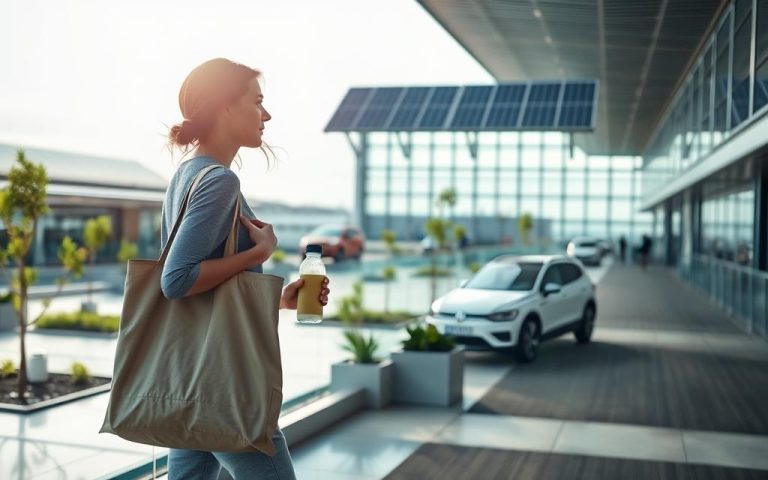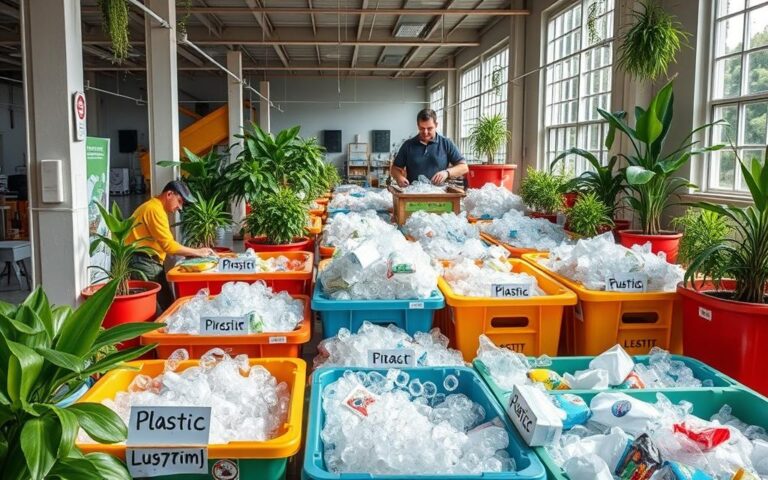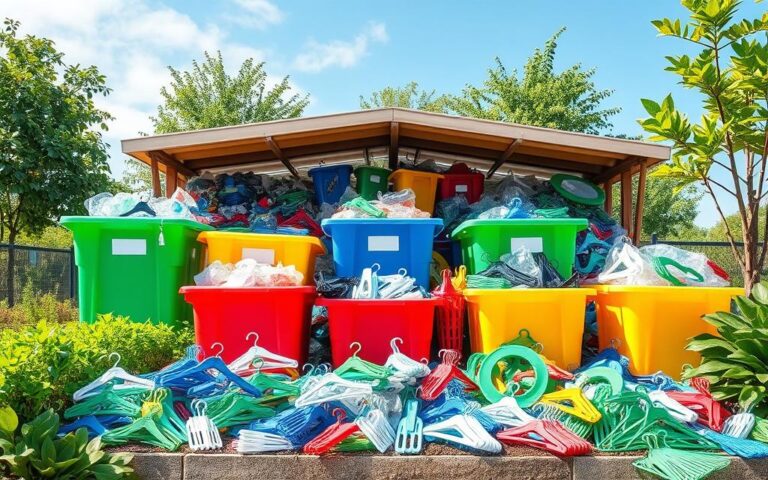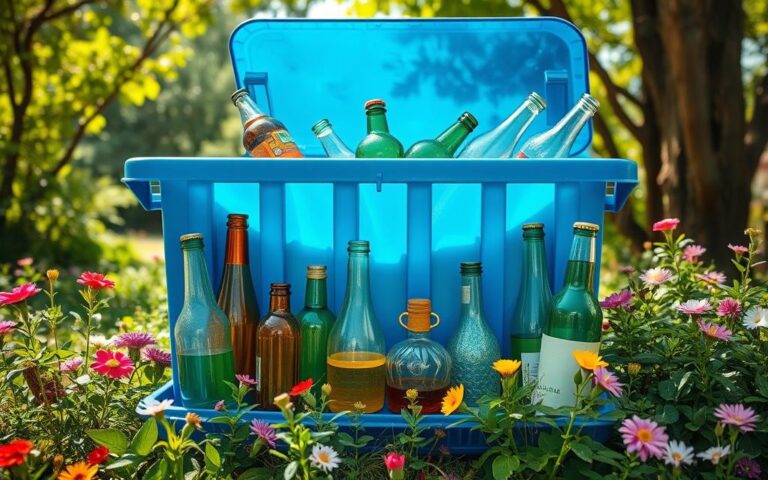Can You Recycle Tetra Pak? Sustainable Disposal Tips
Tetra Pak containers are used a lot for our favourite drinks. But, we often wonder if they can be recycled well. These cartons are made of about 75% renewable materials, mostly paperboard. This fact points to their sustainability if we dispose of them correctly.
Tetra Pak aims to go green by using 100% renewable electricity by 2030. Yet, recycling these packages is not straightforward. They include paperboard, plastic, and sometimes aluminum. This mix makes their recycling difficult. Even though Tetra Pak is 100% recyclable, it needs special machines. These machines are not found in most recycling places.
To recycle these cartons well, check if your area can handle Tetra Pak. If your local site can’t, feel free to contact Tetra Pak or your rubbish service. It’s good to push for more recycling options.
The Nature of Tetra Pak Cartons
Tetra Pak cartons are a smart way to package things, made from a mix of materials. These materials make the cartons useful and better for the planet. The cartons are mostly made from stuff that grows back and can be recycled. But, getting rid of them the right way can be tough.
Understanding the Composition
Made mainly of 75% cardboard, Tetra Paks also have 14% plastic sheets, 5% aluminium, and 6% bioplastic caps. This mix shows how committed Tetra Pak is to using renewable materials. A big part, 41%, of the cartons use wood from forests that are managed well.
Even though these cartons can be recycled, it’s not easy to do so. You need special machines for it. But not all places that recycle have these machines. So, many Tetra Paks don’t get recycled and end up in the trash, and this is a problem for landfills.
While some of the recycled Tetra Paks can be turned into new things, like cardboard or furniture, most don’t get recycled. Three out of four end up being waste. We need to find better ways to recycle them and keep them out of landfills.
| Material | Percentage | Recyclability Notes |
|---|---|---|
| Cardboard | 75% | Sources from FSC-Certified forests, suitable for recycling. |
| Plastic Sheets | 14% | Complex to recycle, often ends up in general waste. |
| Aluminium | 5% | High recycling potential, but often downcycled into lesser quality materials. |
| Bioplastic Cap | 6% | Challenges in conventional recycling processes. |
Tetra Pak’s choice of materials is innovative but recycling them is hard. Solving these recycling challenges is key to having more sustainable packaging. It’s important for improving how we deal with Tetra Pak waste.
Can You Recycle Tetra Pak?
Many people wonder if Tetra Pak is eco-friendly when it comes to getting rid of it. Tetra Pak says its products are 100% recyclable, but it’s not that simple. The mix of materials makes recycling tough. The cartons are made of 14% plastic, 5% aluminium, and 75% cardboard.
Only 26% of Tetra Pak cartons are recycled worldwide. Aluminum cans have a 75% recycling rate, showing a big difference. In the US, just 16% of beverage cartons get recycled. Sadly, most end up in dumps or the ocean, hurting our planet.
The complex makeup of Tetra Pak products makes recycling hard. Even in places like San Francisco, where they work hard to avoid landfills, there’s a struggle. Trucks travel far to get these cartons to special recycling places in Mexico. This shows the effort required to recycle Tetra Pak.
- Tetra Pak products are often downcycled into single-use items
- Trader Joe’s continues to sell significant amounts of traditional Tetra Paks
- The introduction of Tetra Rex Bio in 2014 aimed to improve sustainability
- Tetra Rex Bio cartons contain fully recycled paper, distinguishing them from regular versions
To sum up, Tetra Pak tries to make its cartons recyclable. Yet, the real challenge lies in the recycling process itself. It’s tough for both consumers and cities, showing how complex it is to dispose of Tetra Pak properly.
The Environmental Impact of Tetra Pak Recycling
The environmental impact of recycling Tetra Pak is worrying. Only 26% of these packages are recycled worldwide. This low rate shows problems in our recycling systems. In the US, only 16% of beverage cartons get recycled. This highlights a big gap in dealing with waste properly.
Recycling Rates and Challenges
Recycling Tetra Pak varies greatly by region. For example, Vietnam has just one facility for Tetra Pak recycling, showing limited access. Meanwhile, around 50% of aluminium cans are recycled due to their value. This highlights the struggle to recycle more complex items like Tetra Pak.
Tetra Pak’s makeup is complicated. It’s 74% paper, 22% plastic, and 4% aluminium. Recycling it requires special equipment, which is costly and uses a lot of energy. Additionally, transporting these cartons to recycling centres can be a long journey, increasing costs and emissions.
Local councils are also affected, with some increasing fees for recycling cartons by up to 125%. New plastic-lined cartons could make things worse. Although the Clean Future Act aims to improve recycling, it doesn’t fully tackle the issues with Tetra Pak recycling.
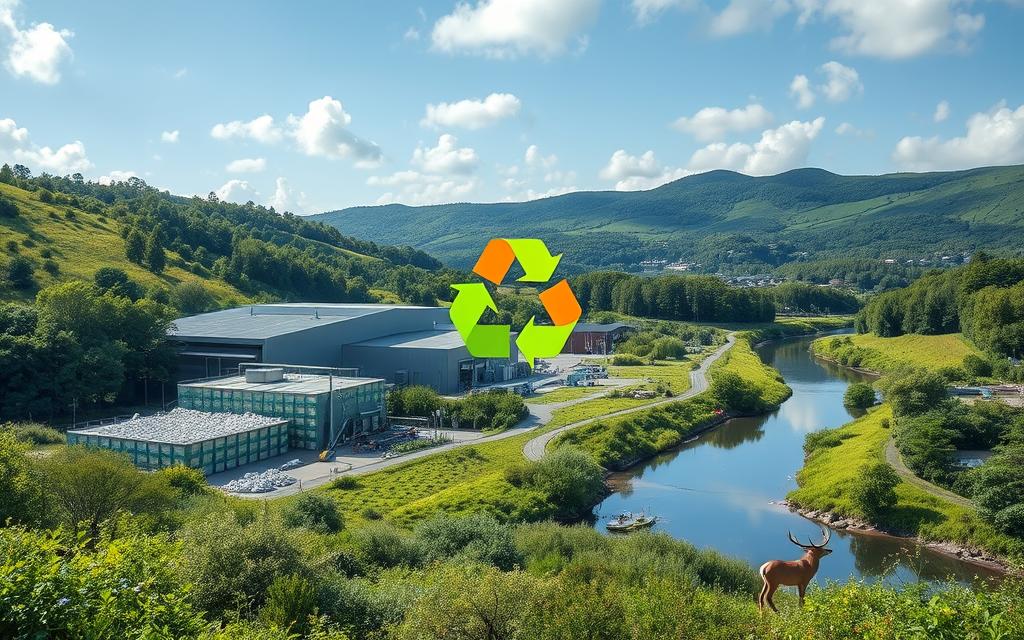
| Material | Global Recycling Rate | Challenges | Recycling Capability |
|---|---|---|---|
| Tetra Pak | 26% | Complex material composition, high processing costs | Requires specialised facilities |
| Aluminium Cans | 50% | Lower complexity, economic incentives | Widely accepted |
| Plastic Bottles | 60% | Limited markets for recycled materials | Commonly processed |
| Glass Bottles | Recyclable indefinitely | Higher resource efficiency when reused | Standard recycling facilities |
With Tetra Pak recycling lagging behind other materials, the environmental issue is concerning. People are more conscious of sustainability now. We must prioritise solving these recycling challenges to make real progress.
Sustainable Disposal Alternatives
Exploring sustainable disposal alternatives can help us change waste management. The ideas of *reduce, reuse, recycle* guide us towards sustainability. Making homemade versions of plant-based milks and juices reduces single-use containers. This helps cut down on waste.
Reduce, Reuse, Recycle
The *reduce, reuse, recycle* approach is key to cutting waste. Buying less packaged goods or in bulk helps avoid Tetra Pak waste. Reusing prolongs item lifespans, reducing the need for new ones. Making your own products can lessen packaging waste.
Local Solutions and Community Initiatives
Local solutions, like milk vending machines, lower Tetra Pak use by using personal containers. Community recycling raises responsible disposal awareness. Such actions create a cooperative spirit for a greener future.
| Aspect | Tetra Pak | Alternative Packaging Options |
|---|---|---|
| Carbon Footprint (kg CO2e/1000 L) | 90-111 | Varies (often higher) |
| Recycling Rate (2018) | 26% (goal: 40%) | Varies widely |
| Materials | 70% paperboard, 25% plastic, 5% aluminium | Depends on material composition |
| Transport Efficiency | 33% more efficient | Less efficiency |
Conclusion
Tetra Pak recycling shows we need to make smart choices about how we throw away used materials. Even though Tetra Pak cartons use 75% renewable materials, recycling them is hard. In the UK, only 15% of these cartons are recycled effectively.
Our environmental duty is important because the materials in Tetra Pak, like aluminium and plastic, lead to more carbon emissions. While it’s possible to turn these cartons into new items such as cardboard, most end up as waste. For more details on this issue, check out the Tetra Pak recycling summary.
Although Tetra Pak has its advantages, we need to think about other options like glass or steel cans. By choosing wisely and backing green solutions, we can help solve environmental problems. It’s key to be well-informed and make choices that lessen our impact on the planet.
FAQ
Can Tetra Pak cartons be recycled effectively?
Tetra Pak cartons are said to be 100% recyclable. However, their recycling involves complex equipment not found everywhere. Thus, globally, only a tiny fraction actually gets recycled.
What materials make up a Tetra Pak carton?
Typically, a Tetra Pak contains about 70% paperboard, 14% plastic, 5% aluminium, and 6% bio-plastic for caps. Knowing these materials helps understand the recycling challenges.
What are the recycling rates for Tetra Pak?
Globally, Tetra Pak cartons have a recycling rate of about 26%. This is much lower than glass and aluminium, which are recycled more frequently.
What are the environmental impacts of Tetra Pak recycling?
Recycling Tetra Pak requires a lot of energy and money. Plus, many cartons just end up in landfills, causing pollution. It’s a big problem for our planet.
What alternatives can I consider instead of using Tetra Pak?
Cutting down on waste is vital. Try homemade options for drinks usually in Tetra Paks. Or look into local, innovative solutions like milk vending machines.
How can communities promote Tetra Pak recycling and reuse?
Communities can lead the change through recycling drives and education. Workshops and programmes teach the value of recycling and reusing, making a sustainable difference.
Why is it important to understand the recyclability of Tetra Pak?
Knowing how to recycle Tetra Pak helps us choose wisely. It’s a step towards sustainability and preserving our environment for future generations.

